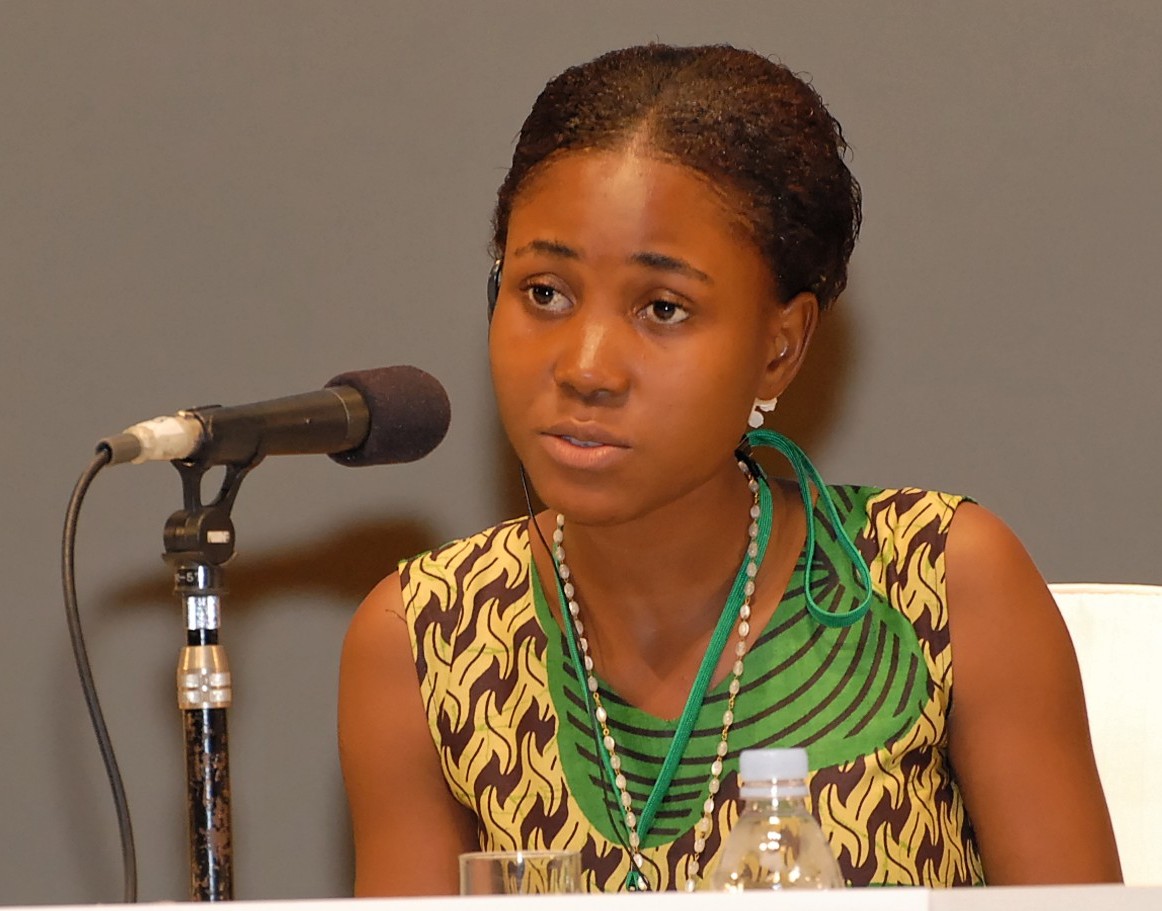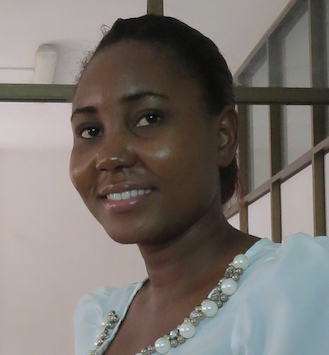
In this issue we interviewed Clara Mduma, Member of the Global Network of Religions for Children, GNRC, Tanzania and facilitator of the Learning to Live Together Programme
1- Tell us a bit about yourself (where are you from, where do you live, what are you studying and how do you spend your free time)
My name is Clara Mduma, I live in Dar es salaam, Tanzania. I completed in 2013 a Bachelor of Commerce in Finance and a Major in Corporate Finance at the University of Dodoma.
Most of my free time I use it volunteering in activities as part of a network called YouthCAN (Youth Climate Activist Network) under the Norwegian Church Aid. We do advocacy campaigns to promote climate change policies at government level. Now we work under a campaign called “We Have Faith, Act Now for Climate Justice”. I have participated in the development of petitions and collection of signatures to affect environmental policies. Through the network we also do awareness campaigns, hold publics hearing, concerts and workshops in schools about climate change and climate justice.
Currently I’m working in a two-year project at the Vijana Vipaji Foundation as Economic Empowerment Officer. The project is about empowering young artists who come from vulnerable backgrounds by training, promoting and marketing their work. We also do advocacy campaigns to influence cultural policies in both countries, Tanzania and Kenya. We do art/music and clown therapy in hospitals where we provide services in pediatric wards for children with cancer and with disabilities. Now I’m working with 187 beneficiaries from the Dar es salaam region.
2- When and how were you first introduced to the Learning to Live Together Programme?
I was only 16 years old when I was invited to attend an international workshop organized by Arigatou International in Geneva to test the initial idea of the Learning to Live Together manual. Later a similar workshop was held in Dar es salaam, organized by the GNRC for children from East Africa, and I had the opportunity to be a part of it. It was only at that time that I learned about other faiths different to Islam and mine. At home and at school we never had the opportunity to talk about other faiths. Through participating in the workshop I was able to learn about others and it was surprising to me even to visit their worship places.
3- How has the exposure to the Learning to Live Together Programme been relevant to your life? Can you give us some examples of how you have put into practice the learning you gained?
I started working with GNRC Africa since I was 14 years old. I believe that through my involvement in the Learning to Live Together activities I have been able to nurture myself, learn about my responsibilities in my community, relate with others, and mobilize children and youth for different activities. For instance, in 2008 when the Child Act Bill was discussed for amendments I managed to mobilize my class at Jangwani Secondary School to write a paper about things that children wanted to add to the bill. We presented it to the Minister of Community Development Gender and Children.
It has been great for me to be able to conduct forums in schools where children can speak freely on issues that affect them and give out their suggestions. I’m happy these initiatives on ethics education are carried out by GNRC Tanzania in many schools and peace clubs.
Sometimes I wonder what my life would be if I wouldn’t have got the opportunity to receive training on the Learning to Live Together Programme. Seeing youth my age now and how they live and what they have become, I know I’m different because I once got the opportunity to learn and know about cultural diversity and religious tolerance.
4- How has the exposure to the Learning to Live Together Programme helped you connect with people who are different from you?
It has helped me a lot. I’m now working with people who come from different cultural backgrounds, but with whom I share a common ground, as we both work for community development. I’m now able to identify that we all share a common goal, which makes it easy for me to work with them. Also during my schooling, I was selected to join college at the University of Dodoma, away from my hometown, in an area where most people have a different culture, and still I was able to relate to them and respect what they believe in.
5- Can you share with us something you used to think or do before you got involved in the Learning to Live Together Programmed and something you think or do now?
I can’t remember for sure things that I was doing when I was 13 years old. However, I do believe I was lucky that I got involved in the Learning to Live Together Programme since I was a child. I believe it has made me grow spiritually and it has helped me get more involved in my faith as a Christian. This is something I’m sure I have gained, as well as the successes I have achieved in my life.
I was also able to discover myself and to understand myself better, particularly in what I want to become. The programs help me discover who I am, being able to inspire other young girls in my school to bring the changes they all want to see. We all have something that we can offer to others or the world. I have always believed that.
6- What was your favorite part of the Learning to Live Together activities you were involved in?
The activities of “knowing myself and others”. I like that part because through that I was able to get to know myself and others and I learned to respect them. People wonder now why do I have so many friends, and I believe it is because I’m able to understand other people and respect everything that they believe.
7- How would you introduce the Learning to Live Together Programme to a child or a youth who would like to know about it?
For children, through games and by giving them the opportunity to create and discover something and make them share it with others. In my community I would suggest the LTLT to be put into the school curriculum, so teachers can be trained on how to use it in a school context. I live in a community where domestic violence occurs a lot, which results in an increasing number of children living in the streets. It’s better to start training children at a younger age.
8- Are you still involved somehow to Learning to Live Together activities? If so, how?
No! Now I’m not involved with any activities of Learning to Live Together. But from the training that I’m conducting now of art and clown therapy, there are a lot of activities from LTLT that we are using.
9- Do you have anything else you want to add about your involvement in the Program?
People don’t easily see why I’m working for a community organization while my major is in Finances, but I find it interesting to provide services to children and to be able to bring smiles in their faces. I know some children face a lot of difficulties, but children who live in hospitals for long periods are not able to go to school like any other children. Through my work collaborating with artists, we are able to bring smiles to their faces. I’m able to do that now since I once received the Learning to Live Together training, which allows me to adapt different methodologies and use diverse activities during the therapies with children.
